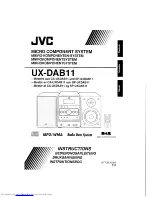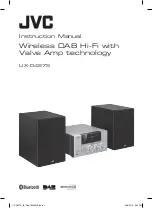
GHP 10 Marine Autopilot System Installation Instructions
Configuring the GHP 10
The GHP 10 must be configured and tuned to your boat dynamics and motor configuration. Use the Dockside Wizard and the Sea Trial
Wizard on the GHC 10 to configure the GHP 10. These wizards will walk you through the necessary configuration steps.
the Dockside Wizard
The Dockside Wizard can be performed at the dock, before heading for open water. The first time you power the GHP 10 on, you
are prompted to complete a short setup sequence on the GHC 10. Use the soft keys to select the language, the units of measure, the
heading type, and the auto power-on setting if necessary. When you complete the initial setup, you are ready to start the Dockside
Wizard.
To complete the Dockside Wizard configuration:
1. After completing the initial setup, if the Dockside Wizard does not start automatically, from the Heading screen, select
Menu
>
Setup
>
Dealer Autopilot Configuration
>
Wizards
>
Dockside Wizard
. The Dockside Wizard welcome screen appears on the
GHC 10. Select
Begin
to start the wizard.
2.
Lock to Lock:
Count the number of turns it takes your helm to go from lock to lock (fully turned port to fully turned starboard). Use
the arrows on the GHC 10 to enter the turns you counted (the default is 4.5) and select
Done
.
3.
Helm Displacement:
The helm displacement is usually written on the body of the helm pump. If you are unsure, consult the
manufacturer of your boat for the helm displacement value. Use the arrows on the GHC 10 to enter the helm displacement value
(the default is 1.7 in
3
) and select
Done
.
4.
Steering Direction:
Use the arrows on the GHC 10 to test the steering direction. When you push the right arrow, the motor should
turn the boat to the right, and when you push the left arrow, the motor should turn the boat to the left. Select
Menu
. If the steering
test turns the boat in the correct direction, select
Finished
. If the steering test turns the boat in the opposite direction, select
Switch Directions
.
5.
RPM Source:
Select the engine (or engines) to which you wired the tachometer sensor from the CCU. If you connected a NMEA
2000-compatible engine (or engines) to the NMEA 2000 network, select
nMEA 2000
. For a single-engine boat, select port.
6.
Verify tachometer:
With the engine (or engines) running, compare the RPM readings on the GHC 10 with the tachometer (or
tachometers) on the dashboard of your boat. Adjust the
Pulses Per Rev
with the arrows if the values do not match, and then
select
Done
. When you adjust the
Pulses Per Rev
with the arrows, there is a delay before the new RPM readings appear on the
GHC 10. For each adjustment, be sure to wait until the GHC 10 adjusts to the new reading.
7.
Dockside Wizard Review:
The GHC 10 displays the values you chose when you ran the Dockside Wizard. If any of the values are
incorrect, use the arrow to select the value and select
Select
to re-enter the value. When you are finished reviewing the values,
select
Done
.
the Sea trial Wizard
The Sea Trial Wizard configures the fundamental sensors on the autopilot, and it is extremely important to complete the wizard in
conditions appropriate for your boat. In general, it is highly recommended to complete the Sea Trial Wizard in calm water with little
or no wind. Because the nature of calm water is relative to the size and shape of your boat, be sure you choose a location where:
Your boat does not rock while sitting still or moving very slowly.
Your boat is not significantly affected by the wind.
While completing the Sea Trial Wizard in calm water, it is important to observe the following:
Keep the weight on your boat balanced. Do not move around on the boat while completing any of the steps in the Sea
trial Wizard
.
Be sure that the engines are trimmed down, and that the trim tabs are up.
•
•
•
•














































